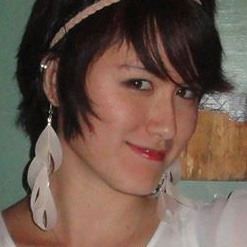
“People often think that politics moves the world, but that is not the case. It is culture and art that move the world. It is emotion, not reason that strikes people in the innermost part of their hearts. When hearts change and are able to receive new things, ideologies and social regimes change as a result.” – Sun Myung Moon
Art holds the potential to serve as a medium to reflect on and give perspective to our lives. The founder of the Currier Museum of Art in Manchester, NH dedicated the museum in 1929 to the “advancement of humanity.” Art, while pleasing the senses delves deeper into the psyche, which is why art matters.
We certainly experienced the power of art on our recent visit to the Currier Museum. Faith Fusion seeks to be so much bigger than just church on Sunday. For this reason, we host a variety of activities to help explore and experience the Divine.
Art as a Revealer of Life
Our visit to the Currier was enhanced by our museum tour guide and local artist, Kim Roth. Through his vast knowledge of art and its various schools and techniques, Kim was able to deepen our appreciation of what we were looking at. Kim noted, “Art is a revealer of life.”
At the entrance of the Currier is a vast modern art sculpture. People tend to either like it or hate it. I am solidly in the latter category but Kim opened my mind about the piece by showing me that its lines, which at first seem random, represent coming, greeting, meeting and leaving. OK, I’m open. And so began our tour.
You have heard of the term inter-faith. Well, Kim describes himself as an “inter-art” artist. For him an inter-artist is someone who recognizes the principles within art that transcend style, genre and time period. During our tour, we benefited from Kim’s knowledge and appreciation of many different styles.
Art Styles and Transitions
One thing that jumped out for me was the transition from the more two dimensional Gothic through the Renaissance to Realism, followed by the development of Impressionism and its fascination with light. He later showed how Realism and Impressionism enjoyed a kind of fusion as is evident in the work of John Singer Sargent.
 Although the painting, Portrait of Grace Elvina, Marchioness Curzon of Kedleston is classified as Realism, it has incorporated certain elements of style from Impressionism. The eye is strongly drawn into the picture based on Grace Elvina’s very real face, while her gown and necklace simply allude to satin and pearl and are painted in a way that draws from both traditions.
Although the painting, Portrait of Grace Elvina, Marchioness Curzon of Kedleston is classified as Realism, it has incorporated certain elements of style from Impressionism. The eye is strongly drawn into the picture based on Grace Elvina’s very real face, while her gown and necklace simply allude to satin and pearl and are painted in a way that draws from both traditions.
The historical progression of styles in art can be viewed as symbolically representing human growth. As we seek to understand life and reflect it through art, the artwork itself reflects different aspects of human awareness.
I enjoyed the visit to the Currier because it showed me a depth of truth revealed in art that is captured in a different way than through the medium of words or social action. We need these diverse expressions of truth to comprehend the vastness of God and our own lives.
Manifesting the values of truth, beauty and goodness
The Divine Principle asserts the paradigm of truth, beauty and goodness as the basis to establish a good world.
“When the body responds to the mind’s emotion, intellect and will, its actions pursue the values of beauty, truth and goodness respectively. God is the subject partner to the human mind; hence He is the subject partner to human emotions, intellect and will. Desiring to realize his original value, a person responds to the perfect emotion, perfect intellect and perfect will of God through his mind, and acts accordingly through his body. Thus, he manifests the values of original beauty, original truth and original goodness.” Divine Principle, Creation 4.2 p.37
Composer and author, David Eaton, notes,
 “In this context it can be ascertained that truth and intellect (knowing) should be harmonized with beauty and emotion (feeling) in such a way that goodness and will (doing) becomes the foundation for a moral and ethical society. Science, art and religion should be juxtaposed to become the basis for building a culture of peace as well as creating artistic expressions that reflect and/or embrace that vision. Furthermore, if art/music and religion go “hand in hand” in bringing people to God and we are to advocate the Divine Principle’s paradigm of conjoining truth, beauty and goodness, then the “beauty” component needs to be valued – and supported – commensurate to the truth and goodness components.”
“In this context it can be ascertained that truth and intellect (knowing) should be harmonized with beauty and emotion (feeling) in such a way that goodness and will (doing) becomes the foundation for a moral and ethical society. Science, art and religion should be juxtaposed to become the basis for building a culture of peace as well as creating artistic expressions that reflect and/or embrace that vision. Furthermore, if art/music and religion go “hand in hand” in bringing people to God and we are to advocate the Divine Principle’s paradigm of conjoining truth, beauty and goodness, then the “beauty” component needs to be valued – and supported – commensurate to the truth and goodness components.”
As we wandered around the gallery it became clearer to me that art, when used to express these ideals, lifts the spirit to a higher place. You feel it!
There is so much more to say but the best way to learn more is to visit the Currier or your local museum of art and stand in front of a painting and take a minute to sense what the painting evokes in you. Let it speak it to you and perhaps you will hear the voice of God.













